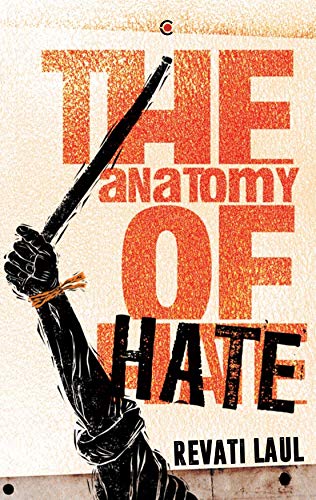A Deep Dive into Hate
Anatomy of Hate is a powerful exploration into the minds of individuals who committed violent crimes during the 2002 Gujarat riots. On the morning of February 27, 2002, a fire in one of the bogies of the Sabarmati Express near Godhra station claimed the lives of over 50 Hindu pilgrims. While the cause of the fire remains disputed, the aftermath sparked a state-wide pogrom targeting Muslims, resulting in hundreds of deaths and thousands rendered homeless.
Revati Laul, through Anatomy of Hate, goes beyond the headlines to examine the social, economic, and psychological factors that turned ordinary citizens into participants in horrific violence.
The Story of Three Men
The book follows the lives of three men from different social and economic backgrounds who were part of the mob. Through their experiences, Laul seeks to understand what drives ordinary people to commit extraordinary acts of violence.
“The twenty-eighth was not a calendar day. It was a black hole that bent time. In the lives of Suresh, Dungar, and Pranav, it rearranged all previous days and experiences… Choice is a vexing word. What part of choice applies when a tidal wave of anger tears through a state?”
By telling their stories, Anatomy of Hate exposes the internal struggles, suppressed frustrations, and external pressures that contribute to communal violence.
Hate, Politics, and Manipulation
Laul’s research shows how political forces and societal structures exploit existing tensions. Vulnerable individuals are drawn into violent acts, fueled by promises, prejudices, or long-suppressed anger. The book highlights how politicians manipulate public sentiment, fan religious divisions, and use ordinary citizens to further their agendas.
“There was a part of Dungar that was always ashamed of not having a pucca house with a marble floor like some Muslim traders had built… Now was the chance for that long-suppressed rage to merge with the tidal wave sweeping across Gujarat. Anger with a purpose.”
Anatomy of Hate examines not just the acts of violence, but the societal conditions that make them possible.
Aftermath and Reflection
The book also explores the aftermath of the riots. Laul investigates whether the perpetrators felt remorse, accepted responsibility, or attempted to make amends. Through these reflections, Anatomy of Hate forces readers to confront uncomfortable truths about human nature, mob mentality, and the fragility of moral judgment in times of communal tension.
By chronicling these stories, the book reminds us of what society can become if hatred is allowed to fester unchecked.
About the Author
Revati Laul is an independent journalist and filmmaker based in New Delhi. She began her career in television and has more recently focused on print journalism, contributing to The Quint and The Hindustan Times. Anatomy of Hate is her first book.
Our Verdict
Anatomy of Hate is a compelling and necessary read for anyone seeking to understand the 2002 Gujarat pogrom and the mechanisms by which ordinary individuals are drawn into acts of violence. Laul’s meticulous research, vivid storytelling, and nuanced analysis make this book a profound study of human psychology, societal manipulation, and the destructive power of hate.
Whether you are a student of history, politics, or human behavior, Anatomy of Hate provides crucial insights into the consequences of unchecked hatred and the importance of safeguarding empathy and justice in society.
